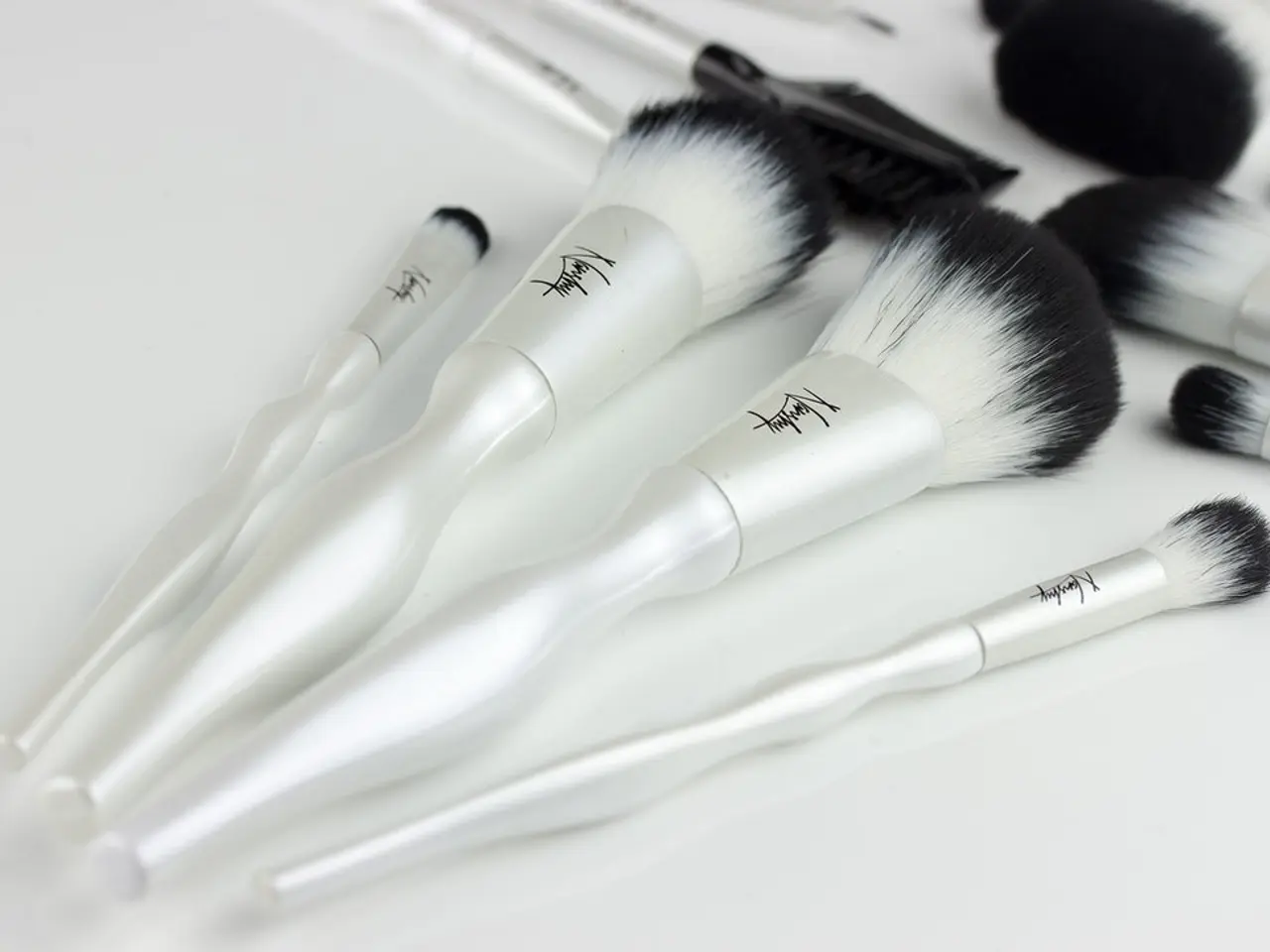Facial Exfoliation Techniques: Exploring 6 Methods and Pitfalls to Avoid
In the quest for a radiant complexion, exfoliating the skin is a crucial step. However, for those with sensitive skin, finding the right approach is essential to avoid redness, irritation, or barrier damage. This article offers recommendations for gentle, non-irritating exfoliation methods tailored for sensitive skin.
### Recommended Exfoliation Methods
Chemical exfoliation, using mild acids, is preferred over physical scrubs, which can be too abrasive. Enzyme-based exfoliants or Polyhydroxy Acids (PHAs) are recommended, as they work more slowly and gently compared to stronger acids like glycolic acid. It's crucial to avoid gritty scrubs and high-strength AHAs, as these can cause irritation.
Exfoliate once a week or up to twice weekly for sensitive skin to prevent over-exfoliation. Always patch-test new exfoliants before applying broadly. Following exfoliation, it's essential to apply SPF protection during the day to protect the skin barrier.
### Recommended Products
PHA-based exfoliators, such as The Inkey List PHA Gentle Exfoliating Toner, which reduces redness and smooths skin gently, are ideal. Enzyme exfoliating gels with gentle fruit acids, like apple extract, to brighten and hydrate without irritation, are another option.
Products combining mild AHAs with PHAs and BHAs in low concentrations, like Minimalist AHA PHA BHA 32% serum, can refine texture without stripping the skin. However, use such products with caution for sensitivity. A soft washcloth or gauze can be used for very gentle manual exfoliation instead of abrasive scrubs.
### Additional Tips
For sensitive skin prone to dryness, ensure proper hydration and moisturization before exfoliating. Exfoliate preferably in the evening. Avoid exfoliating if skin is red or compromised.
Understanding a person's skin type is essential to find the best way of exfoliating. AHAs, BHAs, and retinol should not be used together, as they will be too harsh on the skin. Salt and sugar scrubs are gentle but should be used with caution, not more than once a week.
Remember, AHAs dissolve the top layer of skin to reveal new skin cells, while the skin naturally renews itself every 30 days or so. Manual exfoliation involves using a tool or scrub to remove dead skin cells physically. Exfoliating scrubs can damage skin and cause micro tears or irritation.
By following these guidelines, you can maintain a gentle approach tailored for sensitive skin, promoting softness and radiance without irritation.
[1] Skincare Tips for Sensitive Skin: A Comprehensive Guide. (2021). Retrieved from https://www.healthline.com/health/beauty-skin-care/sensitive-skin-tips#exfoliation
[2] Exfoliating for Sensitive Skin: How to Exfoliate without Irritation. (2020). Retrieved from https://www.byrdie.com/exfoliating-for-sensitive-skin-3696309
[3] The Best Exfoliators for Sensitive Skin. (2021). Retrieved from https://www.allure.com/story/best-exfoliators-for-sensitive-skin
[4] How to Exfoliate Sensitive Skin. (2019). Retrieved from https://www.harpersbazaar.com/beauty/skincare/advice/a29405742/exfoliate-sensitive-skin/
[5] The Best Exfoliators for Sensitive Skin. (2020). Retrieved from https://www.elle.com/beauty/skincare/a35892258/best-exfoliators-for-sensitive-skin/
- Exfoliating the skin is a critical step in achieving a radiant complexion, but it's essential for those with sensitive skin to be cautious to avoid diseaselike redness, irritation, or barrier damage.
- Chemical exfoliation using mild acids is recommended over physical scrubs for sensitive skin, as they are less abrasive.
- Enzyme-based exfoliants or Polyhydroxy Acids (PHAs) are preferred, as they work more gently and slowly compared to stronger acids like glycolic acid.
- It's crucial to avoid gritty scrubs and high-strength AHAs, as they can cause irritation in sensitive skin.
- Exfoliate once a week or up to twice weekly for sensitive skin to prevent over-exfoliation, and always patch-test new exfoliants before applying broadly.
- Following exfoliation, it's essential to apply SPF protection during the day to protect the skin barrier.
- PHA-based exfoliators, such as The Inkey List PHA Gentle Exfoliating Toner, are ideal for sensitive skin, as they reduce redness and smooth the skin gently.
- Enzyme exfoliating gels with gentle fruit acids, like apple extract, to brighten and hydrate without irritation, are anotheroption.
- Products combining mild AHAs with PHAs and BHAs in low concentrations can refine texture without stripping the skin, but use such products with caution for sensitivity.
- A soft washcloth or gauze can be used for very gentle manual exfoliation instead of abrasive scrubs.
- For sensitive skin prone to dryness, ensure proper hydration and moisturization before exfoliating, and exfoliate preferably in the evening.
- Understanding a person's skin type is essential to find the best way of exfoliating to avoid conditions like colitis, psoriasis, or Crohn's disease due to irritation.
- A healthy diet, rich in nutrition and free from inflammatory foods, can contribute to maintaining optimal skin health and may help prevent skin degeneration, diabetes, arthritis, asthma, obesity, hepatitis, and other diseases. Regular fitness-and-exercise, skincare, and a predictive approach to personal skincare needs are important for achieving and maintaining a radiant, healthy complexion.




